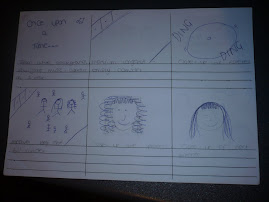Vladimir Yakovlevich Propp was a Russian formalist scholar who analyzed the basic plot components of Russian folk tales to identify their simplest irreducible narrative elements.
Vladimir Propp was born on April 17, 1895 in St. Petersburg to a German family. He attended St. Petersburg University (1913-1918) majoring in Russian and German philosophy. Upon graduation he taught Russian and German at a secondary school and then became a college teacher of German. His Morphology of the Folk Tale was published in Russian in 1928. Although it represented a breakthrough in both folkloristics and morphology and influenced Claude Lévi-Strauss and Roland Barthes, it was generally unnoticed in the West until it was translated in the 1950s. His character types are used in media education and can be applied to almost any story, be it in literature, theatre, film, television series, etc.
In 1932, Propp became a member of Leningrad University (formerly St. Petersburg University) faculty. After 1938, he shifted the focus of his research from linguistics to folklore. He chaired the Department of Folklore until it became part of the Department of Russian Literature. Propp remained a faculty member until his death in 1970.
Vladimir Propp extended the Russian Formalist approach to the study of narrative structure. In the Formalist approach, sentence structures were broken down into analyzable elements, or morphemes, and Propp used this method by analogy to analyze Russian fairy tales. By breaking down a large number of Russian folk tales into their smallest narrative units, or narratemes, Propp was able to arrive at a typology of narrative structures.
Propp's approach has been criticized for removing all verbal considerations from the analysis, even though the folktale's form is almost always oral, and also all considerations of tone, mood, character, and, anything that differentiates one fairy tale from another. One of the most prominent critics of Propp is the famous French Structuralist Claude Lévi-Strauss, who used Propp's monograph on the morphology of the Folktale to demonstrate the superiority of the Structuralist approach, and the shortcomings of the Formalist approach. (see Levi-Strauss, Claude. "Structure and Form: Reflection on a Work by Vladimir Propp"). Defenders of Propp believe that that such criticisms are largely redundant, as Propp's approach was not intended to unearth meaning in the fairy tales he examined (as may be the case with Structuralist or Psychoanalytic analysis), nor to find the elements that differentiate one tale from another, but to unearth the elemental building blocks that formed the basis of their narrative structure.
Tuesday, 3 November 2009
Subscribe to:
Post Comments (Atom)






No comments:
Post a Comment